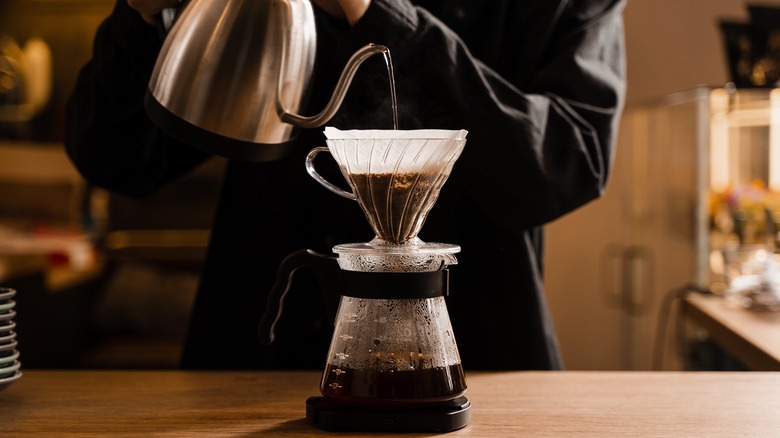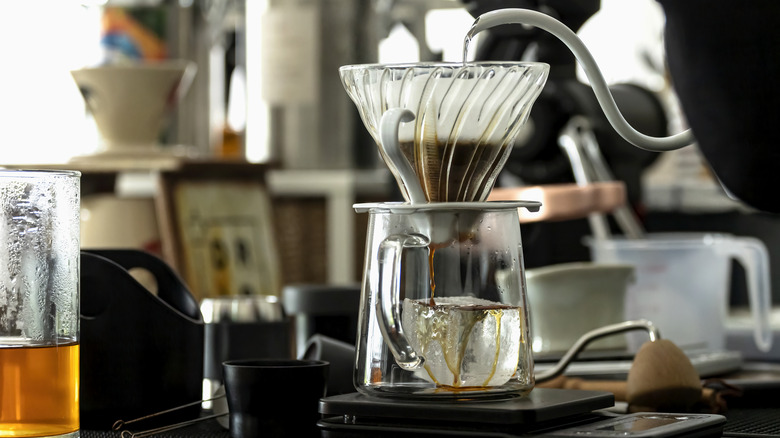The Pour-Over Coffee Tip That Ensures An Even Extraction
Every coffee fanatic has reasons behind their preferred brewing method, and pour-over coffee lovers have plenty. For example, the pour-over method requires no fancy equipment, works great for a solo sipper, and gives the maker total control over the final cup. However, it does require a little more babying than most other brewing methods. There are dozens of ways to tweak your pour-over process, some requiring more precision than others, but by following one simple rule, you can easily upgrade your pour-over game.
Set up your mug, dripper, filter, and grounds as usual, then pour your water over the grounds in an even spiral pattern starting from the center and slowly working your way out to saturate the coffee evenly. When you're about half an inch from the edge of the filter, start spiraling back toward the center.
Why stop short? Well, when you pour the water on the outer edge of the brewing cone, it hits the filter before the grounds and gets wicked straight down the sides and into your mug without extracting any coffee at all, weakening your cup. By avoiding the edge while you pour, you get a more even extraction. Keep slowly spiraling in and out, pouring continuously for about three minutes. After brewing, give your mug a swirl to mix the layers of extracted coffee, and enjoy.
Precision is key to the perfect pour-over
While you don't necessarily need any specialized equipment to make pour-over coffee, a gooseneck kettle can definitely help you nail this tip. An ordinary kettle with a wide spout makes it difficult to control the flow rate of your pour and where the water lands. A gooseneck kettle, on the other hand, has a narrow spout that keeps the flow slow and points exactly where you want it to go, allowing you to pour with precision and stop short of that last half-inch of the cone.
A slow spiral pour saturates the beans without over-agitating them, ensuring a smooth, clear cup of coffee without a bunch of muddy micro-grounds at the bottom. When your brew is done, look for the telltale signs of a perfect pour-over. The grounds should be smooth and flat without any peaks, valleys, or splatters, and there should be an even crust across the top.

